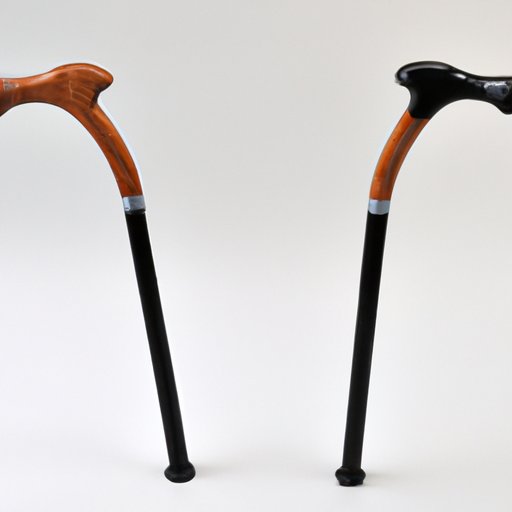Introduction
Canes have been used for centuries as a means of support for individuals who have difficulty walking due to injury, surgery, or chronic conditions such as arthritis or multiple sclerosis. Whether you’re recovering from an injury, experiencing chronic pain, or just need a little extra support while walking, a cane can make all the difference in your mobility and quality of life.
How to Choose the Right Cane
Choosing the right cane is crucial for comfort and stability. There are different types of canes to fit different needs. For example, quad canes provide additional support, while offset canes allow for more freedom of movement. When selecting a cane, you will also need to measure for the correct fit and consider the material. Wooden canes are classic and affordable options, while aluminum canes are lightweight and durable.
When it comes to measuring for the correct fit, the cane handle should be at the crease of your wrist when your arms are at your sides. This will allow for proper alignment and balance while walking. You can measure yourself or ask a healthcare professional to assist you in finding the right cane for your needs.
Proper Height Adjustment
Proper height adjustment is key to providing the right balance and support when using a cane. To adjust the height, loosen the locking mechanism located just below the handle and adjust the cane to the correct height. Once the height is correct, tighten the locking mechanism to secure the cane in place. Your elbow should be slightly flexed when gripping the handle, allowing for comfort and stability when walking.
Walking Technique
The correct walking technique is also important when using a cane. The cane should be held in the hand opposite the affected leg to provide support and balance as you walk. For example, if you have an injured right leg, you should hold the cane in your left hand. As you step forward with the affected leg, the cane should be placed on the ground at the same time to provide support.
When navigating different terrains, it’s important to take extra precautions with a cane. Always check for uneven or unstable surfaces, and use caution when walking on stairs or curbs. You can lead with the cane or your non-affected leg, depending on your specific needs.
Safety Tips
There are several safety tips to consider when using a cane. One crucial tip is to use rubber tips on the end of the cane to prevent slips. Avoid uneven or unstable surfaces, as they can increase the risk of falls. It’s also important to secure the cane when not in use, whether that means using a cane holder or simply placing it against a wall.
Maintenance Tips
To keep your cane in good condition, you’ll need to take proper care of it. That means cleaning it regularly with soap and water, and storing it in a dry place away from heat or moisture. If your cane is damaged or showing signs of wear and tear, it may be time to replace it. When disposing of old canes, it’s important to do so in an environmentally friendly manner.
Using a Cane for Exercise
If you’re looking for additional ways to incorporate your cane into your daily routine, consider using it for exercise. Balance and strength exercises can be done with a cane, and it can also be used as a functional tool in low-impact workouts. The benefits of using a cane for exercise include improved balance, muscle strength, and joint flexibility.
Conclusion
Using a cane can make a significant difference in the mobility and quality of life for individuals who need support while walking. Choosing the right cane, adjusting it properly, and using the correct walking technique are crucial for comfort and stability. By following these guidelines, incorporating safety and maintenance tips, and even using your cane for exercise, you can gain full mobility and independence in your daily life.
